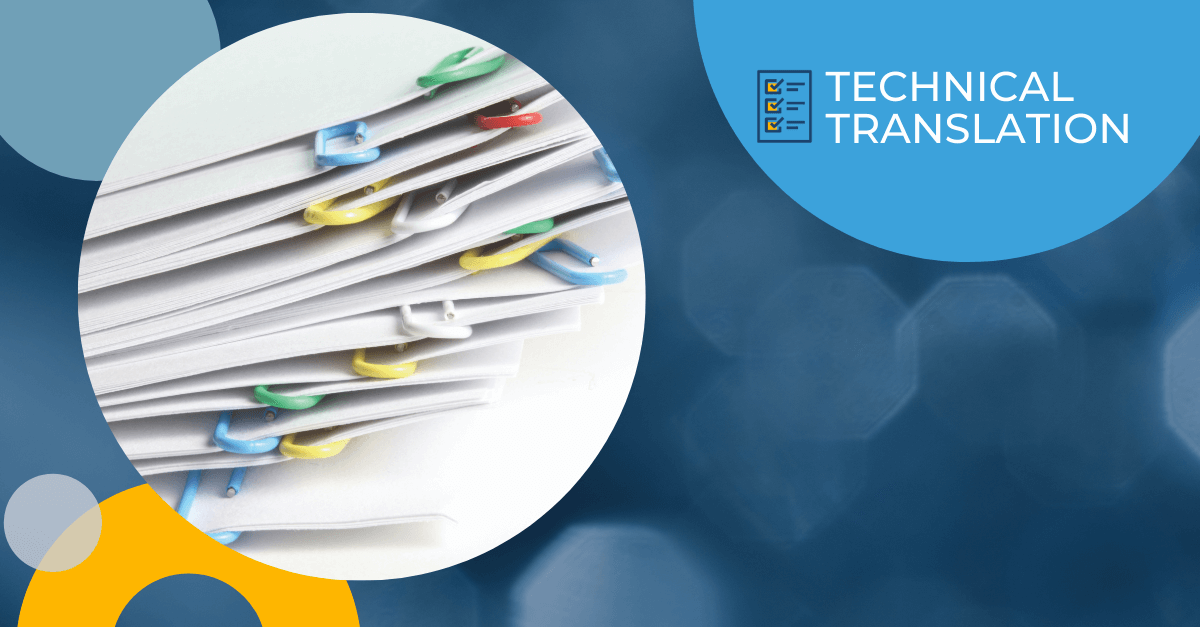Tag: translation company
How to Select a Qualified Translator

When looking for a qualified translator service, you need to find someone you can count on for professional, accurate work. Whether you are translating documents, legal documents, websites or other written content, it is important to know your translated document is something you can count on. In today’s globalized society, translation is increasingly important for effective business communications. Having a highly qualified translator for document translation service is integral to the success of your business.
Why Is a Professional Translation Company Important?
There are many ways to translate documents. Maybe you have a qualified translator in the house with the requisite language skills, maybe you hire a freelancer or maybe you look to a professional translation company for help. Though all three may serve your translation needs, it is important to find a highly skilled and professional qualified translator to ensure accuracy. You want to make sure your message or documents are communicated clearly with the intended meaning and tone you desire. This is best achieved through a certified translation service.
A qualified translator not only gets the correct words down on the page but also produces excellent results. They get across not only the words but also the tone and meaning of the document or written work. Language and communication are complex, and a certified translator should be able to convey exactly what you are looking for.
Different Translation Methods
When you need translation services, there are several different possibilities on who to hire based on the needs of you or your company. You can have an in-house translation department, hire a freelance translator or hire a professional translation company. There are benefits to each method.

-
In-House Translation
One option in translation services is to hire an in-house translator as part of your staff. This person will be part of your office and work only on translating for your company. A benefit of this type of translation is that an in-house translator can be very familiar with the specifics of your company. They will know the specific projects, teams and departments that they are translating for. Having someone that’s deeply familiar with your company is a huge plus.
A drawback to having in-house translation services is that there may be high associated costs. In addition to paying the full-time salary of your translator, you will also need to purchase translation tools and train staff to use them. The costs will increase if you require translation of several languages. Supporting multiple languages requires more staff and resources, increasing costs of translation services.
This may be a good option for you if you have the funds to pay for the high initial investment costs and resources to hire and train translation staff. In addition, it is best if you have a high volume of translation needs in a specific language. However, the costs may be too high for many.
-
Freelance Translators
A second option for hiring translators is to rely on freelance workers. These contractors may be based anywhere in the world thanks to the Internet. There are many freelance translators available that can be found online.
Freelance translation often provides the lowest cost option. You avoid the overhead costs associated with having an in-house translator or hiring a translation service. You will only need to pay specifically for your translation needs and will avoid extra costs.
However, working with freelance translators presents significant challenges not present when hiring in-house or using a professional translation services company. Freelance translators likely have several clients, so your work may not always take priority. Turnaround times for translation may be slower than in other methods. In addition, quality may vary and be inconsistent across different translators. It may be difficult to find a translator at the professional level required.
This may be a good option for you if you have someone dedicated to managing the challenges associated with freelance translation. You will need someone who can provide quality control for the documents. If you have translation needs in multiple languages, but not in high volumes, this may be a better option than hiring an in-house translator.
-
Professional Translation Company
The third option for filling your translation needs is to hire a professional translation service provider. This is a company that specializes in translation. A professional translation company can provide industry-specific translations and translations into multiple languages.
A professional translation company will provide many advantages. Outsourcing the responsibility of translation will take pressure on your office staff. They will be able to provide a high-quality translation specific to your industry’s needs. In addition, a translation services company will have the best availability and consistent turnaround times.
The benefit of a professional translation services company is that they have established processes for translation. An established company knows what works best and has the knowledge to provide high-quality translations. Since they are focused on translation specifically, they are experts that can give you the best quality product available.
Translation companies may have higher costs than freelance contractors. However, this is due to the level of management and quality control present in a professional translation. This level of accuracy and quality cannot be controlled with cheaper freelance options. As such, a translation company is usually the best option to ensure that translation meets your needs.
What Are the Qualities of a Great Professional Translation Company?

If you’ve chosen to go with a professional translation company, you then have to choose the right company for your needs. There are different translation companies available and it may be difficult to tell what companies or translators offer the high level of translation that you are looking for. What makes one translation company better than another?
There are several indicators that a company you are looking at is a certified translation service that you should hire. When choosing a translation company, look into these six indicators: certification, language experience, industry expertise, references, availability and value. Paying attention to these six factors will help you pick the translation company that is right for you.
1. Certification
Assuring quality in a translation can be difficult. Luckily, there is a certification designation that helps ensure you pick a qualified company. Work with an ISO-certified translation company in order to get the best results. ISO is the International Organization for Standardization, an independent organization that develops standards for quality. Standards are developed by reaching a consensus among the people that need them. One of the services that the ISO certifies is translation.
When looking at translation services, look for a company that is ISO certified. This should be displayed on their website or materials. Ask if the company is ISO certified before you hire.
2. Language Experience
Before choosing a translator, consider their language experience. The best translators have fluency in both languages – the one you are translating from and the one you are translating to. The best translators are often native speakers. Before hiring a company, look at the quality of their translators in the languages you need.
You may have translation needs in several languages. Hiring a translation company that can meet your needs in all your languages will ensure an easier and more consistent process. Make sure the company has high-quality translators available in all languages you need.
3. Industry Expertise
Another key element to choosing a high-quality translator is finding someone who is familiar with your industry. Just because someone is fluent in both languages does not mean that they are familiar with all the technical terminology of your industry. Each industry, be it legal, financial or science, has its own set of terminology and jargon.
Choose a translation company that meets your specific industry’s needs. Each translation company may specialize in and be equipped to handle translation from different industries. For example, Morningside Translations serves the following primary industries: life sciences, legal, financial, manufacturing, consumer products, government, nonprofits, labor and employment, electronics, energy, and media and entertainment.
If a company that you are considering does not have experience working in your industry, it is probably not the best choice for accurate translations. Your best option is to go with a company that has specific experience working with the kind of documents you need to be translated. This way they will be familiar with the terminology and jargon of your documents.
A company with industry-specific experience will also be familiar with the tone needed in different kinds of documents. Is the tone more formal or casual? Who is the document meant to address? A qualified translator with industry experience will know how to address the reader and who the reader is. These qualities are central to having a great translation.
4. Get References
A great way to help determine the quality of a translation service is to look at their references. Check out the references or testimonials available on the translation service’s website. Are they from reputable individuals or companies?
If you know someone who has used translation services in the past, be sure to get personal recommendations. If someone was not happy, what did they feel their service was missing? This can help you hone in on the pros and cons of a company.
Longevity can also help determine if a translation company is right for you. An experienced company that has been around for a while indicates customer satisfaction. In order for a company to succeed, the customers have to keep coming. If a company has been around for a while, this may indicate a high-quality service.
5. Availability
Think about your translation needs. How quickly do you need your documents back and translated? Sometimes you may be pressed for time and need your documents translated on short notice. You need someone you can count on to return your translations quickly and on deadline.
In order to ensure this, look for a translation company that operates 24/7 and can process new requests at any time of the day or week. The problem with hiring individual translators is that you are bound by their schedule and availability. One individual cannot be available at all hours. They may be busy with other projects or on vacation.
A translation company that has many translators and high availability is the best choice to ensure your translation needs are met. Before you hire a translation service, check their hours and availability. Check how many translators they have available. Check what type of turnaround times you can expect. If you are equipped with this knowledge, you will be able to make an informed choice and pick translation services that are right for you.
6. Value
Let’s not forget value when we are talking about picking a great translation service. Having high-quality translations with great turnaround times is a valuable service that is well worth the cost. Once you have ensured the translation company you are looking into meets all your needs, you can compare and contrast services for price and value.
Having a high-quality translator may at first seem costly. However, in the long term, it will be more costly to your business to have poorly documented translation. A poor translation can scare away potential customers or clients. It can prevent you from expanding into the globalized economy. High-quality translation can improve your business prospects.
A high-quality translation service will provide a competitive quote for your translation that meets your needs and requirements. If you receive a low-ball quote from a translation service, make sure that the service is able to meet all your needs and provide the translation services you need.
Choosing a Translation Service

If you pay attention to these six factors, you can get the kind of translation that meets your needs and propels your business forward. Having a highly qualified translator can take your business to the next level.
In this increasingly globalized economy, translation services are more important than ever. Your clients, customers or business partners may be located in different parts of the world and speak different languages. Without a high-quality translation service, it can be difficult to communicate effectively and have accurate document translation.
Luckily, professional translation services are available to help your company meet its industry-specific needs. Whether you have legal, scientific, entertainment or other industry-specific documents that need to be translated, Morningside Translations can provide translations that meet your needs. We are the industry leader in translation solutions worldwide. We can provide the accurate, efficient, industry-specific translations needed to help your business succeed.
You can count on Morningside to provide all the services you need, including a qualified translator for your next project. Providing translation services in more than 200 languages and in a wide range of industries, we can fulfill your translation needs. Browse through our website to see the types of services we provide and the industries we serve. We can provide a free quote to start your project. To find out more about Morningside Translations, contact us today.
Get the latest insights delivered to your inbox
5 Tips to Lower Translation Costs in 2015

The holidays are always stressful, but many companies are still figuring out next year’s budget and re-examining ways to lower costs in 2015. In our “news you can use” section, here are 5 tips for lowering your translation costs in 2015:
1. Translate only into those languages that are widely used
You can reach 84% of global Internet users by translating your English website into just 9 languages. (You can reach 71% by translating into only five languages.) The numbers are similar for software and mobile apps. If you are targeting a global audience and don’t have a particular region in your sights, a great way to lower translation costs is to focus on the most widely used languages and skip the rest.
2. Request conversions
Many document translation projects involve translating content into languages that are very similar. For example, Canadian French and European French, or Latin American Spanish and European Spanish. The main differences between the languages listed above relate to word choice, spelling, and punctuation. To save money, you don’t need to translate the document into both languages-instead ask your translation partner to edit or “convert” the translation into the other language. Editing/revising an existing translation is far less expensive than ordering a new one.
3. Reduce word count of the source document
If possible, review your source files to see if any content can be edited out or doesn’t require translation. Most translation companies charge by the word, so eliminating unnecessary words can make a big difference. Even if the content was critical in the original version, it might not be relevant to a foreign-language audience. For example, not every word of marketing content requires translation.
4. Finalize text before requesting translation
Unless it’s absolutely necessary, make sure that content is completed and approved before submitting it for translation. Changing copy in the middle of a translation project not only adds time but can also increase cost, especially if the previous version has already been translated and now needs to be re-translated. If you do need to make changes after initiating a project, send them to your translation partner as quickly as possible.
5. Allow sufficient turnaround time
Sometimes last-minute translations can’t be avoided, but whenever possible give your translation company enough time to complete your translation project at standard turnaround. Rush turnaround usually means rush fees, and the shorter the turnaround, the higher the rush surcharge.
Get the latest insights delivered to your inbox
How to Lower Your Document Translation Costs

Document translation services are a regular need for companies doing business overseas, employing foreign language staff, or looking to target foreign markets. Machine translations and discount vendors rarely get the job done and it is very important to make sure that you invest the proper resources for professional translation services. With that said, there are steps you can take to cut costs significantly for document translation without sacrificing on quality.
1. Request Repetitive text discounts
Repetitive text discounts can help save your company a significant amount of money. For many document translation projects, there are sections or paragraphs that contain repeated content. Instead of having to translate the content multiple times, you can cut costs by speaking with your translation company about discounts for repetitive text where applicable. Many translation services provide discounts when translating two or more documents with significant sections of identical content, or if there are frequent repetitions within a single document. For website translation, there is often a significant amount of repetitive text and requesting discounts is a smart move.
2. Use Translation Memory
Translation Memory is a linguistic database that makes previous document translations more accessible for future work, and automates various translation-related tasks. It accumulates and stores all previous translations and “learns” from the translator so the same phrase or sentence won’t have to be translated twice.
For example, a company might need to add additional instructions or a new product to their manual or update their brochure. Instead of having to translate the entire document again, the translation memory tool would have already stored key terms from the previously translated brochure/manual content.
This can help lower costs and also ensure consistency in terminology and style across all product manuals and brochures.
3. Request conversions
Many document translation projects involve translating content into languages that are very similar. For example, Canadian French and European French, or Latin American Spanish and European Spanish. The main differences between the languages listed above relates to slang, spelling, and punctuation. In situations like these, a company would not necessarily have to translate an entire document into both languages–instead they could edit or “convert” the translation into the other language. By asking your translation company to provide a single document translation and then to convert that translation, you can help reduce translation costs.
You never want to sacrifice quality, but the above steps can allow you to get the best of both worlds – document translation services from a top-tier company at a reduced cost that will make you or your client happy. When using translation services, make sure to demand the following reductions to receive the most competitive price possible.
Get the latest insights delivered to your inbox
English – A Polyglot Language

As a professional translation company, we spend much of our time focused on foreign languages, especially languages that come up frequently for legal translations and patent translations. But every so often we turn our attention to our native English. We are constantly surprised by how diverse the English language is, and how much of the English vocabulary is derived from foreign words. According to one survey, only one-third of English words come from Old English. 41% come from French and Old Norman, and at least 15% comes from Latin. Another 10% come from a mix of other languages.
There are plenty of English words whose foreign origin is quite obvious. We can guess where chauffeur, angst, and desperado come from (French, German, and Spanish). But many words that sound like “classic” English also have a foreign origin, and the origin is not necessarily European or even Indo-European–you have probably used a few words today that come from languages that many of us have never heard of. Here are a few examples:
- Ketchup – The word comes from Amoy, a Chinese dialect, where it meant the brine of pickled fish.
- Barbecue – The quintessential American cooking tradition, BBQ actually comes from Carib, a language spoken in northern South America and the Caribbean.
- Sugar & Candy – These sweet words come from Sanskrit, the ancient Hindu language of Northern India.
- Husband – The word comes from Old Norse, the extinct language of the Vikings, where it meant “master of the house.” In modern American usage, it often means the exact opposite.
- Pal – The word comes from Romany, the Gypsy language, where it means brother or comrade.
- Tank – As in water tank. The word comes from Gujarati, a language spoken in India.
Get the latest insights delivered to your inbox
Reviewing a Translation

When choosing a translation service, it is important to find out which translation company can provide you with the quality legal translation or technical translation you require in order to ensure top quality.
Morningside is a translation service which delivers top quality translations since we are a translation company that insists on reviewing each and every single legal translation or technical translation that is delivered to our clients.
Reviewing a technical translation or a legal translation requires not only a cursory review of the completed language translation, but also requires further layers of review. As a translation company, we strive to ensure the review of the technical translation, legal translation, or patent translation that our client receives includes layers of review.
These layers of review include but are not limited to, review of language, review of specific terminology to ensure consistency, review of dialect, and review of spelling. While there are other areas of review which we take care of, at the end of the day all of these measures are what makes Morningside your choice for a translation service or translation company.
Whether your needs include a document translation, legal translation, technical translation, patent translation, or document review, Morningside can assist you and provide you with a top quality translation and we ensure that the following time you are seeking a translation service or translation company, you will look to Morningside for their translation and review expertise.
Get the latest insights delivered to your inbox
Professional Translations

The translation of consumer products labeling and instructions is no simple task. For pharmaceuticals and other medical translations, an incorrect or unclear translation can have serious repercussions. Cultural sensitivity is also paramount: words and phrases that are catchy in English can fall flat or even offend your target audience.
One thing you should certainly not do is use machine or Internet translations. These translations are not nearly accurate enough. For example, the washing instructions on a child’s sweater in Germany were translated as “washing from the left side,” which obviously makes no sense. What the label was trying to say is “wash inside out.” This error was due to a literal translation of the German instructions, and a literal translation is rarely an accurate one.
Here is another example of a faulty translation, though this one was apparently the result of human error. You would probably think twice about purchasing the Tehao Rechargeable Shaver (made in China) that included these instructions in English: “Smuggle the razor blade (reference value around 400 g) on your muscle vertically, then drag your skin and shave back slowly. Too much strength on muscle may cause quick wear and tear, poor shaving feeling and outer razor blade’s tear.” This is probably not the work of a professional translator.
One way to avoid obvious translation errors that are laughable as well as those that can offend is to use a translation company that relies on translators in the target country, or who are at the very least native speakers of the target language and familiar with cultural sensitivities and proper idiom. Trying to save money by relying on machine translations or a translation service that offers rock-bottom prices (and inevitably quality as well) could end up making your product the butt of jokes.
Get the latest insights delivered to your inbox
It Takes a Patent Lawyer

Given the current state of the global economy, few companies can afford not to consider cost-cutting measures regarding their intellectual property procurement and patent translations.
Whether you are the Chief Patent Counsel for a Fortune 500 biotech company, or a patent attorney representing clients with a very limited patent portfolio, evaluating your patent translation costs related to overseas patent prosecution could make a significant difference in your–or your client’s–bottom line.
Chances are you or your outside counsel currently relies on foreign associates to handle both the translation and the national phase filing of the application. Many patent groups have never seriously considered the possibility of “unbundling” these services and using a separate vendor for the patent translation. Certainly there are a number of advantages to the status quo approach. For law firms, reciprocity is important, and providing your foreign associates with more business—including translation business—helps your firm get more business in return. For busy and often under-staffed in-house patent groups, dealing with one foreign patent firm as a “one-stop-shop” for both translating and filing a patent in a given country appears easier and more convenient. For the foreign associates, the status quo is also ideal, since the high fees they charge for translating the patent is an important revenue stream.
But this convenience could be far more expensive than you realize. Given limited patent budgets, cuts that are not made in translation costs could lead to other reductions that are far riskier: the outsourcing of patent drafting work, a reduction in the number of countries you file in, or the use of less accurate machine translations to translate prior arts that are critical in understanding the patentability of an application that is being drafted.
There are several options for companies that want to reduce their patent translation costs related to filing. The most obvious option—one that is becoming far more common—is filing your patent only in countries where the filing language is English. That means filing in the United States, Canada, India, Australia, Israel, and the EPO (though claims need to be translated into French and German), and several other important markets without incurring any translation costs at all. Certainly, this strategy will significantly reduce the overall cost of filing a specific patent. But of course it also means that your or your client’s invention will not be protected in several major world economies and economic blocs: Brazil, China, Japan, Russia, Latin America, and the Gulf States, to name but a few.
Another option to reducing patent translation costs is focusing on regional blocs where one translation will cover multiple countries. For example, translating your patent into Arabic will allow you to file with the GCC (Gulf Cooperation Council), which includes Saudi Arabia, Kuwait, Qatar, and the UAE. That same Arabic translation (with minor modifications) can also be used to file in Egypt.
Finally, another strategy that is worth considering is turning to a patent translation firm—like Morningside—with proven expertise in translating patent applications. Once the patent translation is completed and returned, you can submit it directly to your foreign associates for filing. Depending on the number of countries where you file, the savings can be very substantial. For example, one of our clients estimated that they would save over $500,000 a year on their filings by using our services for the translation work, and relying on their foreign associates for the filing work only. By saving on translations, they have been able to avoid other cuts in their patent budget and improve their overall bottom line.
We will have more to say about the process of switching from foreign associates for patent translation work in a future posting.
But first a quick note about translation firms. While most American firms employ experienced, certified translators, only a small number of these firms specialize in patent translations. And even fewer utilize native language translators in the target countries with the technical and linguistic background to handle a complex nanotech or biological patent.
But even that is not sufficient. Even the best translators, editors, and project managers probably do not have the necessary legal and technical knowledge to guarantee the most accurate translation possible. It takes a patent lawyer with significant expertise in his country’s patent laws and a grasp of legal nuances related to a patent’s claims. That is why Morningside partners with patent firms in the target countries and relies on native language patent attorneys to oversee the translation process, and carefully edit and proofread the translated application. We believe that it takes a patent lawyer, and most of the patent lawyers that we are pleased to count among our clients believe it does too.
Compromising on patent translation costs should not entail compromising on quality. And one aspect of quality you should absolutely not compromise on is ensuring that your translated applications are carefully reviewed by a patent attorney in the target country before they are filed.

